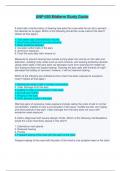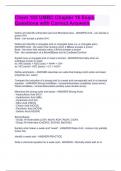Samenvatting
Summary Strategy for Premasters (incl. midterm 2017 & final 2016, 2018)
- Instelling
- Tilburg University (UVT)
This summary contains the following chapters incl. notes: Strategic Management Process External Environment Internal capabilities Cost Leadership Product Differentiation Practise Multiple Choice Questions Multiple Choice Questions Midterm 2017 Multiple Choice Questions Final 2016 Multiple Choice Q...
[Meer zien]














